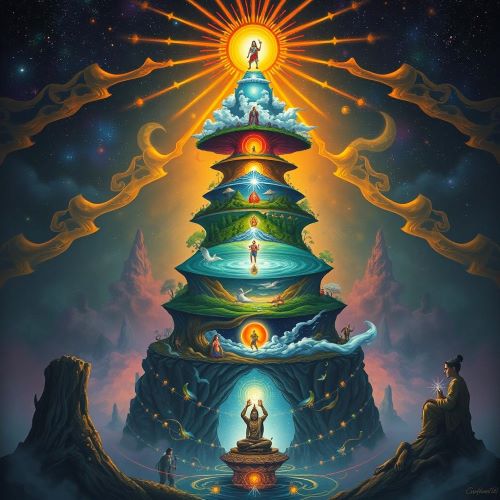Hidden World of the Tulpa – Mind-Born Beings
Introduction
Among the most mysterious and fascinating concepts in spiritual traditions is the tulpa. Originating from Tibetan Buddhism, a tulpa is described as a “thought-form” — a being or object created purely through mental focus, meditation, and imagination. While deeply rooted in esoteric traditions, the idea of tulpas has captivated not just monks and mystics but also modern thinkers, paranormal enthusiasts, and internet communities. Today, the word tulpa has expanded beyond its original cultural roots, taking on new meanings in psychology, spirituality, and even online subcultures.
Origins of the Tulpa Concept
The word tulpa is derived from the Tibetan term sprul-pa, which refers to a “manifestation” or “emanation.” In Tibetan Buddhism, accomplished lamas were said to have the ability to project thought-forms into reality, creating physical or semi-physical manifestations. These tulpas were not mere illusions but autonomous entities that could interact with the physical world and other beings.
Early accounts from Buddhist texts and travelers such as Alexandra David-Néel in the early 20th century introduced the idea of tulpas to Western audiences. David-Néel claimed to have created a tulpa herself during her time in Tibet, though she also warned of their dangers, noting that they can gain independence from their creator.
How Tulpas are Believed to Work
The creation of a tulpa is said to require immense concentration and mental discipline. In traditional practice, monks would use visualization, meditation, and ritual to construct a vivid mental image, imbuing it with energy until it became autonomous. Unlike fleeting daydreams, a tulpa is thought to develop its own consciousness, personality, and ability to act independently.
For some practitioners, the tulpa acts as a spiritual companion or guide, helping with meditation, wisdom, or protection. Others see it as a test of discipline, pushing the boundaries of the human mind and its ability to influence reality.
Tulpa in Modern Interpretations
In the 21st century, the meaning of tulpa has broadened. Internet communities, particularly forums like Reddit and dedicated websites, have reinterpreted tulpas as mental companions or alternate personalities created intentionally. These modern “tulpamancers” often view tulpas as psychological phenomena rather than supernatural entities.
For them, a tulpa is akin to an imaginary friend with greater depth — capable of carrying on conversations, expressing emotions, and even influencing the creator’s perspective. While skeptics dismiss this as self-delusion, proponents argue that the practice can improve mental well-being, creativity, and emotional resilience.
Tulpa in Popular Culture
The allure of tulpas has spread widely into literature, television, and film. From horror stories where thought-forms turn malevolent, to shows like Supernatural and The X-Files, tulpas have become a symbol of the blurred line between imagination and reality. They often appear as cautionary tales about the power of the human mind: what we believe, we create.
Even in modern role-playing games and fantasy fiction, tulpa-like beings serve as fascinating plot devices, demonstrating how ancient mysticism still shapes contemporary storytelling.
Psychological and Scientific Views
From a psychological perspective, some researchers compare tulpas to dissociative identity phenomena or advanced forms of roleplay and visualization. The human brain, capable of creating vivid inner experiences, can construct personalities that feel autonomous. For some, this provides companionship and therapeutic benefits; for others, it can blur boundaries of reality and imagination.
Neuroscientists also suggest that tulpas highlight the incredible plasticity of the human mind. Whether or not they exist as “real” beings, they show the depth of how thought and belief can shape perception and behavior.
The Mystical Allure of Tulpas
What makes the tulpa concept so captivating is its duality: it exists both as a religious teaching and as a modern psychological practice. For the devout, it demonstrates spiritual mastery and the power of consciousness. For the curious, it offers a way to explore imagination and selfhood.
Whether seen as supernatural entities or advanced mental constructs, tulpas embody the idea that the human mind holds untapped power. They remind us that thought itself is not just passive but creative, shaping not only how we see the world but possibly how the world itself unfolds.
Conclusion
The concept of the tulpa bridges ancient mysticism with modern exploration of consciousness. From the sacred practices of Tibetan monks to contemporary online subcultures, tulpas represent the boundless power of imagination and belief. Whether one views them as mystical beings, psychological companions, or symbolic metaphors, they continue to fascinate seekers of the extraordinary. In exploring tulpas, we uncover not only mysteries of the mind but also timeless truths about the nature of reality itself.
No posts were found.









